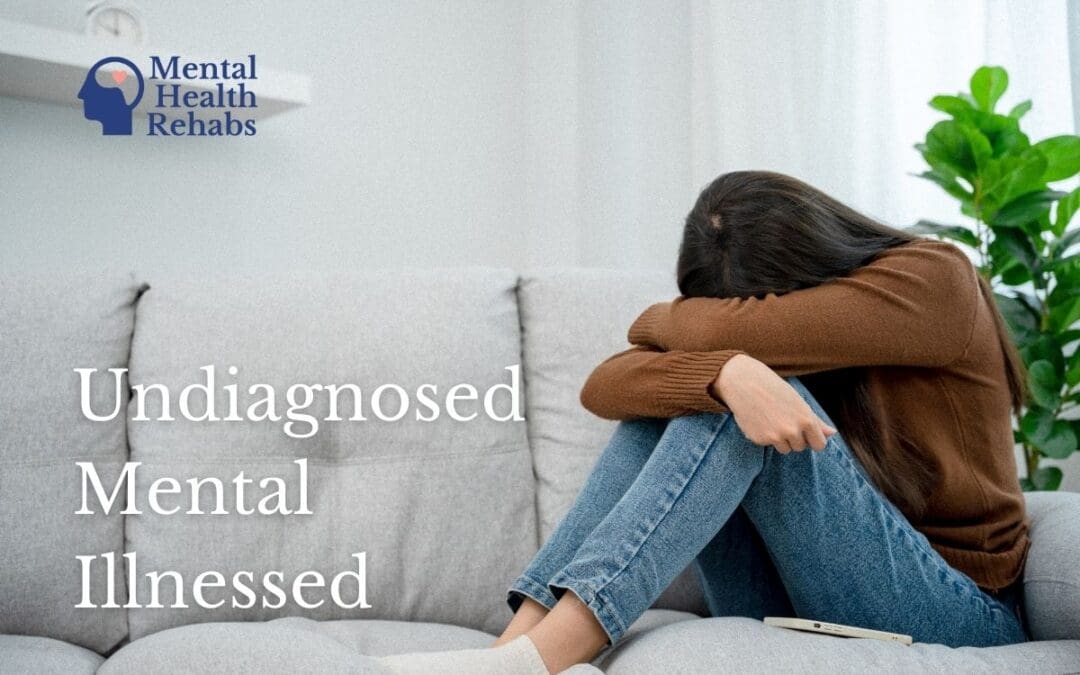Undiagnosed mental illnesses are slow and silent killers. The National Institute of Mental Health reports that nearly one in five U.S. adults live with a mental illness, yet many remain undiagnosed. Here’s what you should know about the prevalence of undiagnosed mental illnesses, the types of conditions that often go unnoticed, the impact of these conditions, and the available treatments.
The Most Commonly Undiagnosed Mental Illnesses
The most commonly undiagnosed mental illnesses often include anxiety disorders, major depressive disorder, bipolar disorder, and schizophrenia. These conditions often go undiagnosed due to their symptoms being mistaken for normal stress or worry, the episodic nature of the disorders, the complexity of their symptoms, or the stigma associated with mental health disorders.
- Anxiety Disorders: Anxiety disorders are among the most common mental health conditions, yet they often go undiagnosed due to their symptoms being mistaken for normal stress or worry.
- Post-Traumatic Stress Disorder (PTSD): This is another significant mental health condition that often goes undiagnosed. One study found that a significant number of patients with PTSD remain undiagnosed and without an accurate diagnosis. The symptoms of PTSD can often be mistaken for other conditions, and the stigma associated with mental health disorders can also contribute to the lack of diagnosis.
- Major depressive disorder: Characterized by persistent feelings of sadness and a lack of interest in activities, is another commonly undiagnosed condition. The episodic nature of this disorder can lead to misdiagnosis or a lack of diagnosis altogether.
- Bipolar disorder: A condition characterized by extreme mood swings, is often misdiagnosed as depression due to the similarity of their depressive episodes. The manic or hypomanic episodes that distinguish bipolar disorder from depression are often overlooked or misunderstood, leading to an incorrect or missed diagnosis.
- Schizophrenia: A severe mental disorder characterized by distortions in thinking, perception, emotions, language, sense of self, and behavior, is often undiagnosed due to the complexity of its symptoms. Schizophrenia is particularly challenging to diagnose and treat, especially in cases resistant to treatment.
The Prevalence of Undiagnosed Mental Illness
Mental illnesses are more common than many realize, with a significant number of cases remaining undiagnosed. The National Alliance on Mental Illness reports that approximately 60% of adults with a mental illness did not receive mental health services in the previous year, suggesting many undiagnosed and untreated cases.
The situation is even more critical among those with severe mental illnesses like schizophrenia or bipolar disorder. The survey found that 40% of adults with these severe conditions did not receive treatment. The reasons for this treatment gap are multifaceted, ranging from stigma and lack of awareness to inadequate access to mental health services.
Children are not immune to this issue either. An estimated 17 million children in the U.S. have experienced a mental health disorder, yet the majority do not receive appropriate treatment.
The Children’s Mental Health Report by the Child Mind Institute reveals that 80% of children with anxiety, 40% with diagnosable ADHD/ADD, and 60% with diagnosable depression are not receiving treatment.
The economic impact of untreated mental illnesses is substantial. The National Alliance on Mental Illness (NAMI) estimates that untreated mental illnesses cost the U.S. economy about $100 billion each year in lost productivity.
Impact of Unrecognized Mental Illness
The impact of undiagnosed mental illnesses is far-reaching and can affect every aspect of an individual’s life. These conditions can lead to difficulties in personal relationships, decreased productivity at work, and an increased risk of physical health problems.
When left untreated, mental illness can lead to long-term issues with emotional stability, behavior regulation, and even physical health.
Mental illness can exacerbate existing mental health problems, leading to a steady and sometimes rapid decline in a person’s mental health. For example, someone with depression may initially show a handful of symptoms but, without treatment, can develop worsened symptoms like suicidal ideation and self-harm.
Untreated mental illness can also take a physical toll on the body. It can weaken the immune system, making it harder for the body to prevent infections. Chronic stress and distress can increase the risk of medical conditions such as diabetes, heart disease, and stroke. Unhealthy habits, such as poor eating or sleeping habits, can also develop, leading to obesity, malnutrition, chronic fatigue, irritability, and decreased libido.
The Importance of Early Intervention
Too often, mental illness goes undetected, leading to long-term feelings of pain, sadness, discomfort, loneliness, and weakness. The National Alliance on Mental Illness reports that between 70 and 90 percent of individuals have a significant reduction of symptoms, and an improved quality of life, with professional treatment and support.
Treatment for mental illnesses often involves a combination of medication and psychotherapy. While each case is different, treatment for mental health illnesses often involves:
- Medication: Medications such as antidepressants, anti-anxiety medications, and antipsychotics are often combined with therapy.
- Therapy: Cognitive-behavioral therapy (CBT), dialectical behavior therapy (DBT), and other forms of treatment can effectively treat mental illnesses.
- Support Groups: Being your honest self with people going on the same journey as you is the best way of not feeling alone. Find your closest support group and attend regularly.
However, the first step towards treatment is getting a proper diagnosis, which can be challenging due to the reasons mentioned above.
Getting Help
If you or someone you know is struggling with symptoms of a mental illness, it’s important to seek help. Reach out to a healthcare provider, a trusted individual in your life, or a mental health professional.
Remember, asking for help is okay, and treatment is available.
By shining a light on this silent epidemic, we can work towards a future where mental health care is accessible and stigma-free.

